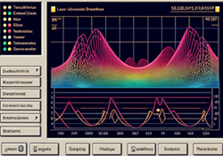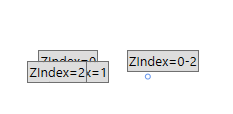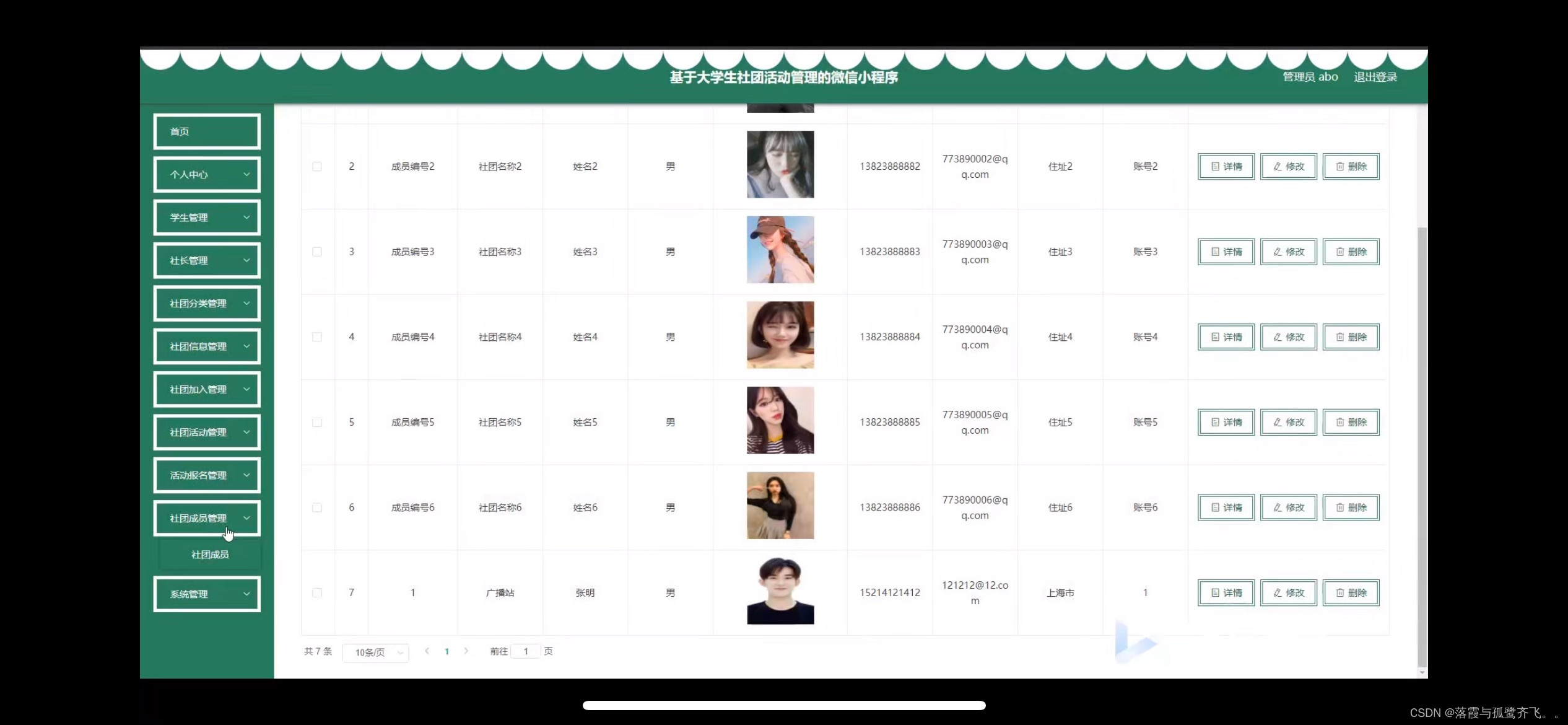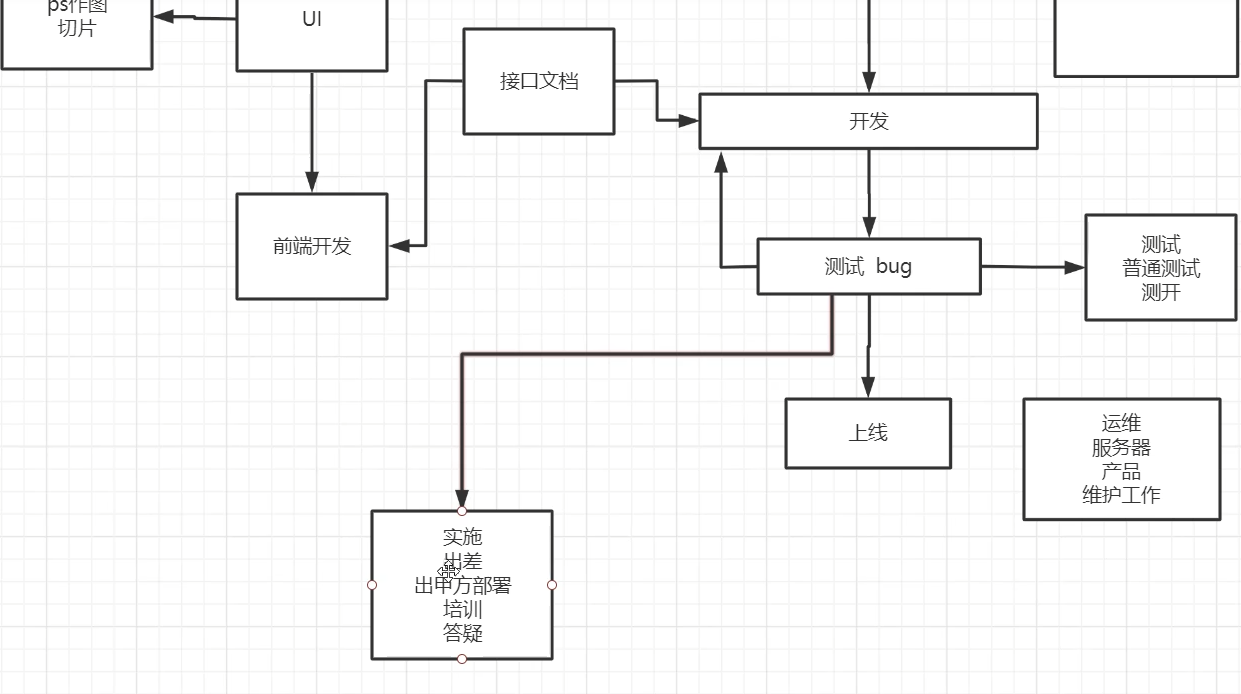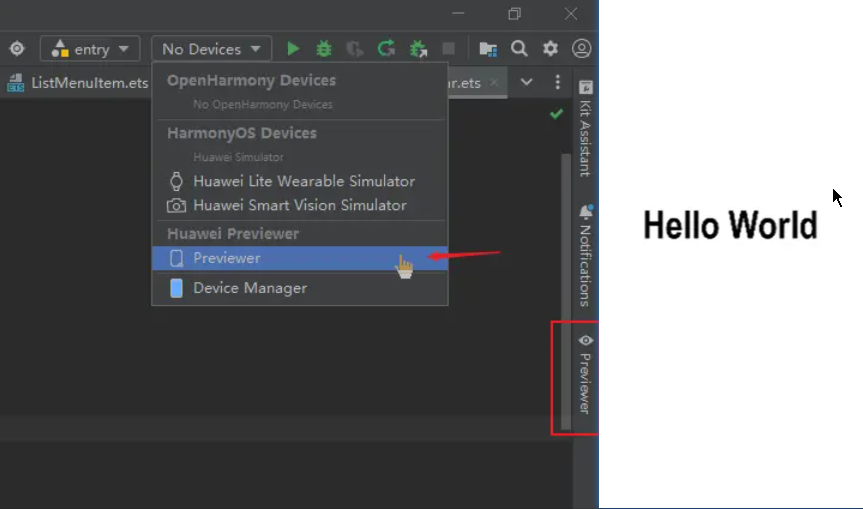
目录
- 一、【iRMB】注意力机制
- 1.1【iRMB】注意力介绍
- 1.2【iRMB】核心代码
- 二、添加【iRMB】注意力机制
- 2.1STEP1
- 2.2STEP2
- 2.3STEP3
- 2.4STEP4
- 三、yaml文件与运行
- 3.1yaml文件
- 3.2运行成功截图
一、【iRMB】注意力机制
1.1【iRMB】注意力介绍

反向残差移动快iRMB结构如下所示,让我们简单分析一下其工作流程和优势
- 工作流程:
- 1x1卷积层(BottleNeck 结构的压缩和扩展):iRMB首先通过一个 1x1卷积层 对输入通道进行扩展和压缩。在标准的BottleNeck结构中,1x1卷积的作用是通过减少或增加通道数,减少计算复杂度的同时保留足够的特征表示能力。
- 高效算子(Efficient Operator)引入:iRMB中引入了不同的高效算子,例如 深度卷积(DWConv)、窗口注意力机制(Window Transformer) 等。这些算子可以根据需要灵活选择。相比传统卷积操作,深度卷积可以降低计算成本,提升网络效率。根据应用场景,iRMB会选择合适的高效算子进行处理,起到加速推理和减少计算量的作用。
- 1x1卷积层恢复通道维度:接下来,经过算子操作后,输出再次经过一个 1x1卷积层,将特征图的维度还原到输入的通道数。这一阶段主要是恢复原始的特征维度,同时对特征图进行再整合。
- 跳跃连接(Skip Connection):最后,iRMB会使用 跳跃连接 机制将输入与输出进行相加。跳跃连接是ResNet结构中常用的手段,它可以有效避免梯度消失问题,并且可以将低层特征直接传递到高层。
- 优势:
- 高效性:iRMB通过使用高效算子(如深度卷积或窗口注意力机制),大幅降低了计算成本,同时保留了较强的特征提取能力。这使得iRMB在性能和效率上具有显著优势,尤其适用于移动设备等对计算资源敏感的场景。
- 灵活性:iRMB的一个显著优势在于其 灵活性,可以根据需求选择不同的高效算子,如深度卷积、注意力机制等。这种模块化设计使得iRMB能够适应不同的任务和应用场景,如分类、检测和分割等。
- 增强的特征表达:通过使用1x1卷积层和高效算子组合,iRMB可以在较少的计算量下保持良好的特征表达能力。跳跃连接的加入也帮助保留了更多底层信息,进一步提升了模型的表现力。
- 易于扩展:iRMB不仅能够在单个任务中表现优异,还能方便地扩展到其他任务,例如分类、检测和分割等多种任务。这种通用模块可以使得模型在不同任务之间共享特征,提高了模型的泛化能力。

1.2【iRMB】核心代码
import math
import torch
import torch.nn as nn
import torch.nn.functional as F
from functools import partial
from einops import rearrange
from timm.models.efficientnet_blocks import SqueezeExcite
from timm.models.layers import DropPath
__all__ = ['iRMB', 'C2f_iRMB']
inplace = True
class LayerNorm2d(nn.Module):
def __init__(self, normalized_shape, eps=1e-6, elementwise_affine=True):
super().__init__()
self.norm = nn.LayerNorm(normalized_shape, eps, elementwise_affine)
def forward(self, x):
x = rearrange(x, 'b c h w -> b h w c').contiguous()
x = self.norm(x)
x = rearrange(x, 'b h w c -> b c h w').contiguous()
return x
def get_norm(norm_layer='in_1d'):
eps = 1e-6
norm_dict = {
'none': nn.Identity,
'in_1d': partial(nn.InstanceNorm1d, eps=eps),
'in_2d': partial(nn.InstanceNorm2d, eps=eps),
'in_3d': partial(nn.InstanceNorm3d, eps=eps),
'bn_1d': partial(nn.BatchNorm1d, eps=eps),
'bn_2d': partial(nn.BatchNorm2d, eps=eps),
# 'bn_2d': partial(nn.SyncBatchNorm, eps=eps),
'bn_3d': partial(nn.BatchNorm3d, eps=eps),
'gn': partial(nn.GroupNorm, eps=eps),
'ln_1d': partial(nn.LayerNorm, eps=eps),
'ln_2d': partial(LayerNorm2d, eps=eps),
}
return norm_dict[norm_layer]
def get_act(act_layer='relu'):
act_dict = {
'none': nn.Identity,
'relu': nn.ReLU,
'relu6': nn.ReLU6,
'silu': nn.SiLU
}
return act_dict[act_layer]
class ConvNormAct(nn.Module):
def __init__(self, dim_in, dim_out, kernel_size, stride=1, dilation=1, groups=1, bias=False,
skip=False, norm_layer='bn_2d', act_layer='relu', inplace=True, drop_path_rate=0.):
super(ConvNormAct, self).__init__()
self.has_skip = skip and dim_in == dim_out
padding = math.ceil((kernel_size - stride) / 2)
self.conv = nn.Conv2d(dim_in, dim_out, kernel_size, stride, padding, dilation, groups, bias)
self.norm = get_norm(norm_layer)(dim_out)
self.act = get_act(act_layer)(inplace=inplace)
self.drop_path = DropPath(drop_path_rate) if drop_path_rate else nn.Identity()
def forward(self, x):
shortcut = x
x = self.conv(x)
x = self.norm(x)
x = self.act(x)
if self.has_skip:
x = self.drop_path(x) + shortcut
return x
class iRMB(nn.Module):
def __init__(self, dim_in, norm_in=True, has_skip=True, exp_ratio=1.0, norm_layer='bn_2d',
act_layer='relu', v_proj=True, dw_ks=3, stride=1, dilation=1, se_ratio=0.0, dim_head=8, window_size=7,
attn_s=True, qkv_bias=False, attn_drop=0., drop=0., drop_path=0., v_group=False, attn_pre=False):
super().__init__()
dim_out = dim_in
self.norm = get_norm(norm_layer)(dim_in) if norm_in else nn.Identity()
dim_mid = int(dim_in * exp_ratio)
self.has_skip = (dim_in == dim_out and stride == 1) and has_skip
self.attn_s = attn_s
if self.attn_s:
assert dim_in % dim_head == 0, 'dim should be divisible by num_heads'
self.dim_head = dim_head
self.window_size = window_size
self.num_head = dim_in // dim_head
self.scale = self.dim_head ** -0.5
self.attn_pre = attn_pre
self.qk = ConvNormAct(dim_in, int(dim_in * 2), kernel_size=1, bias=qkv_bias, norm_layer='none',
act_layer='none')
self.v = ConvNormAct(dim_in, dim_mid, kernel_size=1, groups=self.num_head if v_group else 1, bias=qkv_bias,
norm_layer='none', act_layer=act_layer, inplace=inplace)
self.attn_drop = nn.Dropout(attn_drop)
else:
if v_proj:
self.v = ConvNormAct(dim_in, dim_mid, kernel_size=1, bias=qkv_bias, norm_layer='none',
act_layer=act_layer, inplace=inplace)
else:
self.v = nn.Identity()
self.conv_local = ConvNormAct(dim_mid, dim_mid, kernel_size=dw_ks, stride=stride, dilation=dilation,
groups=dim_mid, norm_layer='bn_2d', act_layer='silu', inplace=inplace)
self.se = SqueezeExcite(dim_mid, rd_ratio=se_ratio, act_layer=get_act(act_layer)) if se_ratio > 0.0 else nn.Identity()
self.proj_drop = nn.Dropout(drop)
self.proj = ConvNormAct(dim_mid, dim_out, kernel_size=1, norm_layer='none', act_layer='none', inplace=inplace)
self.drop_path = DropPath(drop_path) if drop_path else nn.Identity()
def forward(self, x):
shortcut = x
x = self.norm(x)
B, C, H, W = x.shape
if self.attn_s:
# padding
if self.window_size <= 0:
window_size_W, window_size_H = W, H
else:
window_size_W, window_size_H = self.window_size, self.window_size
pad_l, pad_t = 0, 0
pad_r = (window_size_W - W % window_size_W) % window_size_W
pad_b = (window_size_H - H % window_size_H) % window_size_H
x = F.pad(x, (pad_l, pad_r, pad_t, pad_b, 0, 0,))
n1, n2 = (H + pad_b) // window_size_H, (W + pad_r) // window_size_W
x = rearrange(x, 'b c (h1 n1) (w1 n2) -> (b n1 n2) c h1 w1', n1=n1, n2=n2).contiguous()
# attention
b, c, h, w = x.shape
qk = self.qk(x)
qk = rearrange(qk, 'b (qk heads dim_head) h w -> qk b heads (h w) dim_head', qk=2, heads=self.num_head,
dim_head=self.dim_head).contiguous()
q, k = qk[0], qk[1]
attn_spa = (q @ k.transpose(-2, -1)) * self.scale
attn_spa = attn_spa.softmax(dim=-1)
attn_spa = self.attn_drop(attn_spa)
if self.attn_pre:
x = rearrange(x, 'b (heads dim_head) h w -> b heads (h w) dim_head', heads=self.num_head).contiguous()
x_spa = attn_spa @ x
x_spa = rearrange(x_spa, 'b heads (h w) dim_head -> b (heads dim_head) h w', heads=self.num_head, h=h,
w=w).contiguous()
x_spa = self.v(x_spa)
else:
v = self.v(x)
v = rearrange(v, 'b (heads dim_head) h w -> b heads (h w) dim_head', heads=self.num_head).contiguous()
x_spa = attn_spa @ v
x_spa = rearrange(x_spa, 'b heads (h w) dim_head -> b (heads dim_head) h w', heads=self.num_head, h=h,
w=w).contiguous()
# unpadding
x = rearrange(x_spa, '(b n1 n2) c h1 w1 -> b c (h1 n1) (w1 n2)', n1=n1, n2=n2).contiguous()
if pad_r > 0 or pad_b > 0:
x = x[:, :, :H, :W].contiguous()
else:
x = self.v(x)
x = x + self.se(self.conv_local(x)) if self.has_skip else self.se(self.conv_local(x))
x = self.proj_drop(x)
x = self.proj(x)
x = (shortcut + self.drop_path(x)) if self.has_skip else x
return x
def autopad(k, p=None, d=1): # kernel, padding, dilation
"""Pad to 'same' shape outputs."""
if d > 1:
k = d * (k - 1) + 1 if isinstance(k, int) else [d * (x - 1) + 1 for x in k] # actual kernel-size
if p is None:
p = k // 2 if isinstance(k, int) else [x // 2 for x in k] # auto-pad
return p
class Conv(nn.Module):
"""Standard convolution with args(ch_in, ch_out, kernel, stride, padding, groups, dilation, activation)."""
default_act = nn.SiLU() # default activation
def __init__(self, c1, c2, k=1, s=1, p=None, g=1, d=1, act=True):
"""Initialize Conv layer with given arguments including activation."""
super().__init__()
self.conv = nn.Conv2d(c1, c2, k, s, autopad(k, p, d), groups=g, dilation=d, bias=False)
self.bn = nn.BatchNorm2d(c2)
self.act = self.default_act if act is True else act if isinstance(act, nn.Module) else nn.Identity()
def forward(self, x):
"""Apply convolution, batch normalization and activation to input tensor."""
return self.act(self.bn(self.conv(x)))
def forward_fuse(self, x):
"""Perform transposed convolution of 2D data."""
return self.act(self.conv(x))
class Bottleneck(nn.Module):
"""Standard bottleneck."""
def __init__(self, c1, c2, shortcut=True, g=1, k=(3, 3), e=0.5):
"""Initializes a bottleneck module with given input/output channels, shortcut option, group, kernels, and
expansion.
"""
super().__init__()
c_ = int(c2 * e) # hidden channels
self.cv1 = Conv(c1, c_, k[0], 1)
self.cv2 = Conv(c_, c2, k[1], 1, g=g)
self.add = shortcut and c1 == c2
self.iRMB = iRMB(c2)
def forward(self, x):
"""'forward()' applies the YOLO FPN to input data."""
return x + self.iRMB(self.cv2(self.cv1(x))) if self.add else self.iRMB(self.cv2(self.cv1(x)))
class C2f_iRMB(nn.Module):
"""Faster Implementation of CSP Bottleneck with 2 convolutions."""
def __init__(self, c1, c2, n=1, shortcut=False, g=1, e=0.5):
"""Initialize CSP bottleneck layer with two convolutions with arguments ch_in, ch_out, number, shortcut, groups,
expansion.
"""
super().__init__()
self.c = int(c2 * e) # hidden channels
self.cv1 = Conv(c1, 2 * self.c, 1, 1)
self.cv2 = Conv((2 + n) * self.c, c2, 1) # optional act=FReLU(c2)
self.m = nn.ModuleList(Bottleneck(self.c, self.c, shortcut, g, k=((3, 3), (3, 3)), e=1.0) for _ in range(n))
def forward(self, x):
"""Forward pass through C2f layer."""
y = list(self.cv1(x).chunk(2, 1))
y.extend(m(y[-1]) for m in self.m)
return self.cv2(torch.cat(y, 1))
def forward_split(self, x):
"""Forward pass using split() instead of chunk()."""
y = list(self.cv1(x).split((self.c, self.c), 1))
y.extend(m(y[-1]) for m in self.m)
return self.cv2(torch.cat(y, 1))
if __name__ == "__main__":
# Generating Sample image
image_size = (1, 64, 640, 640)
image = torch.rand(*image_size)
# Model
model = iRMB(64, 64)
out = model(image)
print(len(out))
二、添加【iRMB】注意力机制
2.1STEP1
首先找到ultralytics/nn文件路径下新建一个Add-module的python文件包【这里注意一定是python文件包,新建后会自动生成_init_.py】,如果已经跟着我的教程建立过一次了可以省略此步骤,随后新建一个iRMB.py文件并将上文中提到的注意力机制的代码全部粘贴到此文件中,如下图所示
2.2STEP2
在STEP1中新建的_init_.py文件中导入增加改进模块的代码包如下图所示
2.3STEP3
找到ultralytics/nn文件夹中的task.py文件,在其中按照下图添加
2.4STEP4
定位到ultralytics/nn文件夹中的task.py文件中的def parse_model(d, ch, verbose=True): # model_dict, input_channels(3)函数添加如图代码,【如果不好定位可以直接ctrl+f搜索定位】

三、yaml文件与运行
3.1yaml文件
以下是添加【iRMB】注意力机制在Backbone中的yaml文件,大家可以注释自行调节,效果以自己的数据集结果为准
# Ultralytics YOLO 🚀, AGPL-3.0 license
# YOLO11 object detection model with P3-P5 outputs. For Usage examples see https://docs.ultralytics.com/tasks/detect
# Parameters
nc: 80 # number of classes
scales: # model compound scaling constants, i.e. 'model=yolo11n.yaml' will call yolo11.yaml with scale 'n'
# [depth, width, max_channels]
n: [0.50, 0.25, 1024] # summary: 319 layers, 2624080 parameters, 2624064 gradients, 6.6 GFLOPs
s: [0.50, 0.50, 1024] # summary: 319 layers, 9458752 parameters, 9458736 gradients, 21.7 GFLOPs
m: [0.50, 1.00, 512] # summary: 409 layers, 20114688 parameters, 20114672 gradients, 68.5 GFLOPs
l: [1.00, 1.00, 512] # summary: 631 layers, 25372160 parameters, 25372144 gradients, 87.6 GFLOPs
x: [1.00, 1.50, 512] # summary: 631 layers, 56966176 parameters, 56966160 gradients, 196.0 GFLOPs
# YOLO11n backbone
backbone:
# [from, repeats, module, args]
- [-1, 1, Conv, [64, 3, 2]] # 0-P1/2
- [-1, 1, Conv, [128, 3, 2]] # 1-P2/4
- [-1, 2, C3k2, [256, False, 0.25]]
- [-1, 1, Conv, [256, 3, 2]] # 3-P3/8
- [-1, 2, C3k2, [512, False, 0.25]]
- [-1, 1, Conv, [512, 3, 2]] # 5-P4/16
- [-1, 2, C3k2, [512, True]]
- [-1, 1, Conv, [1024, 3, 2]] # 7-P5/32
- [-1, 2, C3k2, [1024, True]]
- [-1, 1, SPPF, [1024, 5]] # 9
- [-1, 1, iRMB, []]
- [-1, 2, C2PSA, [1024]] # 10
# YOLO11n head
head:
- [-1, 1, nn.Upsample, [None, 2, "nearest"]]
- [[-1, 6], 1, Concat, [1]] # cat backbone P4
- [-1, 2, C3k2, [512, False]] # 13
- [-1, 1, nn.Upsample, [None, 2, "nearest"]]
- [[-1, 4], 1, Concat, [1]] # cat backbone P3
- [-1, 2, C3k2, [256, False]] # 16 (P3/8-small)
- [-1, 1, Conv, [256, 3, 2]]
- [[-1, 14], 1, Concat, [1]] # cat head P4
- [-1, 2, C3k2, [512, False]] # 19 (P4/16-medium)
- [-1, 1, Conv, [512, 3, 2]]
- [[-1, 11], 1, Concat, [1]] # cat head P5
- [-1, 2, C3k2, [1024, True]] # 22 (P5/32-large)
- [[17, 20, 23], 1, Detect, [nc]] # Detect(P3, P4, P5)
以上添加位置仅供参考,具体添加位置以及模块效果以自己的数据集结果为准
3.2运行成功截图

这里注意到他的参数量有点大,其实不是很建议用这个模块了,因为故事不好写,不过也可以试一下
OK 以上就是添加【iRMB】注意力机制的全部过程了,后续将持续更新尽情期待


